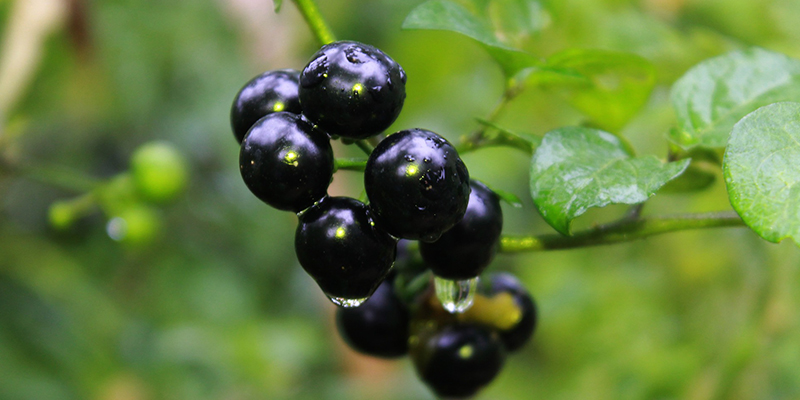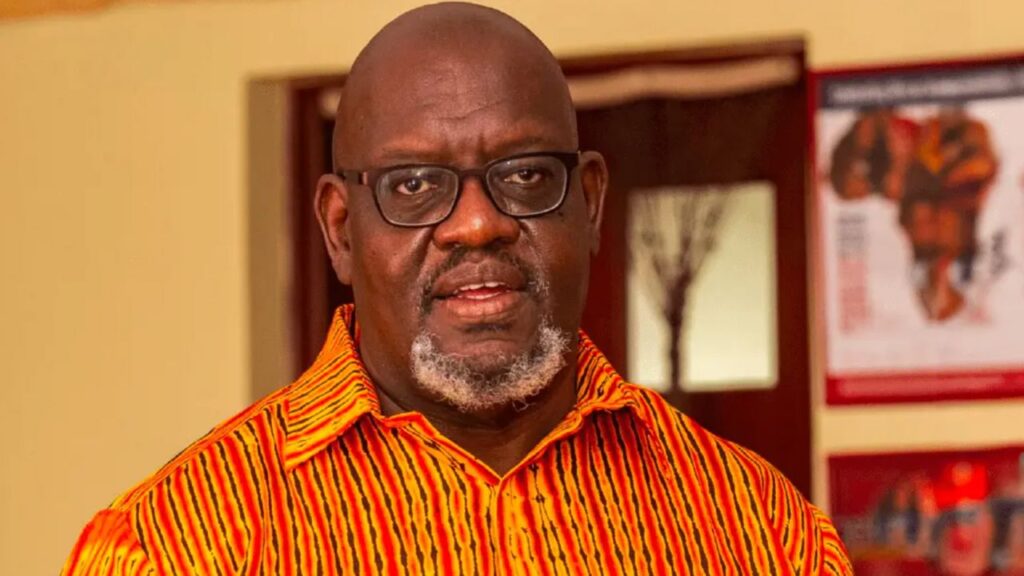They tried to bury us, they didn’t know we were seeds.
This poignant quote is attributed to the Greek poet Dinos Christianopoulos. It formed part of a defiant response to the Greek literary community who criticised Christianopoulos’ poetry as provincial. The poem is part of a collection translated into English by Prof. Nicholas Kostis (1995). The original text read…
What didn’t you do to bury me
But you forgot that I was a seed.
True to text and like a seed, those lines have sprouted many versions of that phrase as mainstream metaphors for resilience and hope in the face of injustice, where individuals or groups of people go up against systems that are designed to bury them.
My own paraphrasing of those famous Christianopoulos’ lines would read:
They tried to bury us, we survived but we lost our way and forgot we are seeds.
The importance of seeds, and indigenous seed cultures, in particular, is a lost consciousness among the contemporary generation of African farmers. The introduction of hybrid seeds in post-colonial Africa progressively altered farming cultures and food systems. Commercial and certified seeds accompanied by a retinue of inputs, fertilisers, pesticides and the promise of high yields but only good for one season, have entrapped rural small-scale farmers in exploitative systems of the dominant agro-industry. Indigenous plant genetic varieties have lost significant ground to hybrid varieties, and consequently, the disappearance of indigenous food cultures and seed knowledge.
Discovering my roots
My own awareness of this crisis evolved over decades. I was brought up in a middle-class family, sojourned in Nairobi, chasing the Kenyan dream. My parents had one foot firmly planted in the ancestral village home, back in Gem, Siaya county.
As second-generation labour migrants to Nairobi, my parents arrived in post-independence Nairobi to secure residence, courtesy of the civil service, in the formerly “white” sections of the city. In these new upper-middle-class spaces, backyards were for recreation and not farming. Nonetheless, my parents never lost touch with their roots, perhaps informed by their acute awareness of the politics of belonging in Nairobi. The capital city was a marketplace where capital was accumulated and transfered from the centre back to the deprived margins. To augment the living costs of large households in the city and establish a security blanket in the event of political dislocation, they maintained a steady link with rural homes.
The importance of seeds, and indigenous seed cultures, in particular, is a lost consciousness among the contemporary generation of African farmers.
My father took us to the village every school holiday without fail. We learned to farm, mainly cash crops (maize and beans) as the staple. It was a labour-intensive crop when planted at scale without the aid of mechanisation.
My father was a civil servant securing measure of comfort after retirement and the loss of government perks. He invested in mono-cropping modern systems focused on high yield and scale for profit. It was during these excursions that I began to understand the clear gendered distinction between how men and women farmed. Men approached farming from a capitalistic frame modeled on the colonial imagery of “I had a farm in Africa” – that famous line by Karen Blixen in the book and movie Out Of Africa – while the women engaged in peasant farming, often associated with allotments around the home dominated by indigenous vegetables.
My grandmother’s permaculture garden
While seasonal farming of maize was a group family activity, my grandmother maintained a garden located outside her kitchen throughout the duration of her life. The kitchen garden was distinguished by plant diversity and the presence of diverse categories of food. Fruit, tubers, bulbs, rhizomes, an assortment of vegetables, fruiting creepers, medicinal herbs, spices and some grain.
Every plant in her garden had a function. To the unaccustomed eye, it appeared to be an unkempt and overgrown allotment, in stark contrast to the neat rows of maize that occupied our family’s three-acre farm. My grandmother practised an alternative style of farming that involved no pesticides, save for firewood ash, minimal tillage, composting and the allotment remained productive throughout the year. My grandmother’s generation employed permaculture principles that Bill Mollison, the Australian educator and co-founder of permaculture, brought to popular consciousness. Her philosophy of food production is captured in Mollison’s articulation of permanent agriculture.
“The greatest change we need to make is from consumption to production, even if on a small scale, in our own gardens. If only 10% of us do this, there is enough for everyone. Hence the futility of revolutionaries who have no gardens, who depend on the very system they attack, and who produce words and bullets, not food and shelter.”
In hindsight, these gardens, a common background feature in most homesteads, served as the main source of the family’s daily nutritional needs. They acted as alternative food sources in the likely event of crop failure due to vagaries of the weather, the sporadic pest and wildlife damage and fluctuating market prices. Additionally, these granny kitchen gardens held something even more precious: a seed bank and a botanical lab where constant experimentation was taking place and heirlooms were preserved. The gardens epitomised food sovereignty in complete revolutionary terms.
My grandparents, who came of age in the nascent days of the British colony, suffered the disruption of an oppressive colonial order. The introduction of a cash economy and wage labour led to new methods of food production, initially as forced labour, and later as a necessity for economic security. While the men farmed to earn money, the women created alternative gardening spaces, delicately negotiating autonomy. A core part of the success of these allotments was seeds.
The loss of heritage seeds
We lost nearly all of the heritage seeds that my grandmother retained in her little garden. The tall pawpaws and red bananas that I thought grew wild as a child are non-existent. The chillies are gone, as are the medicinal herbs and the diverse indigenous vegetables. The traditional yellow-coloured maize known as nyamula of my grandmother’s time are rare sightings. All that I have left is lemongrass that I only went in search of after reading a feature article on its economic viability as a poor man’s cash crop.
In my ancestral village, the keepers of the seed are a generation of grandmothers whose significance is lost in the new agriculture order. The pockets of agribusiness prosperity in the village are exemplified by lush green maize fields propped by agri-tech groups like One Acre Fund that Christine Mungai writes about. Most of the village farms have been reclaimed by bush. Those outside the support network of agricultural companies or who lacked capital to fund farming activity sought alternatives after years of diminishing returns on depleted plots. The culinary habits, a quest for sophistication as an outcome of the colonial project, elaborated by Joe Kobuthi in an article on the hierarchies of food, are now fixated on processed staple substitutes of chapati, bread, mandazi and rice.
In hindsight, these gardens, a common background feature in most homesteads, served as the main source of the family’s daily nutritional needs. They acted as alternative food sources in the likely event of crop failure due to vagaries of the weather, the sporadic pest and wilidlife damage and flactuating market prices.
In a generation, I have witnessed the disappearance and loss of this oral knowledge on indigneous seed in not only food crops, but in trees as well. The predominant attraction to commercially viable eucalyptus, pines and cypress varieties has created tree farms in small holdings following the same ethic of plantation agriculture. Fast growth, high yield and maximum profit.
The indigenous fruits of Kenya are lost to memory and the fruits I now consider traditional, such as mango, guava, and avocado, have roots in Asia and South America. These fruit tree species dismissed for their poor market potential ultimately could not keep up with the evolving culinary habits. The nutritional value of indigenous fruits, such as tamarind, baobab, plums and berries, which grew in the wild, is well documented but restricted to the corridors of botanical research institutes.
Re-imagining food production
The industrialised food systems, with all their detrimental consequences, play havoc not just on our physical selves, characterised by the explosion of diseases of affluence but also on physical land through environmental devastation of water and air pollution and the depletion of biodiversity.
My foray into commercial farming was motivated by profit in an uncertain economy; it was an alternative source of income. I approached it armed with soil tests, fertiliser, certified seed, pesticides and the service of a freelancing agronomist. I decided to try my hand in scaling indigenous vegetables with a boom in demand for local veggies on supermarket shelves. I sourced my seed, the Giant African Black Nightshade (locally known as osuga) from a reputable company. My strategy was monocropping with a rigorous pesticide regimen. Despite my marginal success, it took two pest attacks on a half-acre plot to seriously consider alternative seed. The Catch-22 of hybrid seeds is the heavy reliance on agrochemicals for guaranteed yield. A Route To Food, an alliance against food insecurity in Kenya, conducted research that showed:
At least 32% of pesticide active ingredients that are currently registered and being sold in products in Kenya, have been withdrawn from the European market, due to their serious potential impact on human and environmental health.
This is what set me off in search of my grandmother’s osuga seeds.
Sowing seeds of hope
The seed stock was not available in my village and in the surrounding villages. Whenever I posed the question, I received a cursory response of “koth nyaluo tinde olal”. Indigenous seeds are no longer available these days. My persistence led me to the vibrant Luanda town market in Vihiga County. To my relief, I found a constituency of women selling regional varieties of indigenous vegetable seed, measured by the bottle top from as far as Ukambani. The seed retailed for a fraction of the cost of the certified seed I sourced from the local agrovet. When I asked the women about the stocks, they replied without hesitation, “Mbegu iko”. We have seed. They had formed communities where they collected, selected, exchanged, and preserved seed.
Seed developers have commercialised indigenous leafy vegetables with the emergence of several seed companies selling indigenous vegetable seed. The huge appeal has followed health concerns of meat and processed food-based diets and a return to healthy revitalising traditional plant-based diets.
In a generation, I have witnessed the disappearance and loss of this oral knowledge on indigneous seed in not only food crops, but in trees as well.
I remain aware that these market women in Luanda are an exception rather than the rule. This deliberate stewardship of resilient self-propagating seed is a response to the commercialisation of indigenous vegetable seeds, and in the face of capitalised seed control, they become the face of the resistance movement.
Their actions embody generations of knowledge and a tradition of survival in the midst of a sophisticated assault on the diversity of food crops. The number of peasant farmers on small-scale holdings that once produced the bulk of Africa’s food supply are dwindling. The place of seeds and their preservation is a conversation that happens in the margins amongst groups of community women creating alternative seed economies.
Seed movements
North America has witnessed a revival of native seed exchange banks as indigenous communities re-imagine management systems to store and protect native heirloom seeds that sustained Native American plant-based foods. Seed Keepers Networks are emerging to revitalise native plant species and the inherent rich cultural knowledge that accompanied traditional food pathways. Alongside that are foodie movements returning to tradition of reclaiming and re-imagining pre-colonial African diets that were largely vegan.
Similar initiatives with global visions, such as the International Institute for Environment and Development (IIED)’s Smallholder innovation for resilience (SIFOR) project, examine traditional knowledge-based innovation systems to strengthen food security in the face of climate change. Many of these initiatives abide by a funding model that involves foreign experts jetting in with capital to solve local problems that were exacerbated by neo-liberal economic policies. Where the women are acknowledged, they merely serve as mascots for narratives of rural poverty that appeal to saviour mentality complexes.
It is over two decades since my grandmother’s passing and I have only now come to terms with the significance of her garden and the loss we experienced. It is loss of knowledge, memory, culture and food sovereignty that is replicated among communities in the global South enduring the trauma of colonial dislocation.
The future of seed commons is going to be grassroots-based and sustained by networks of conscious actors organising to dismantle the power of the agroindustrial complex. The confluence of challenges arising from modern food pathways has triggered a case for re-imagination, not only of what we eat, but how we produce what we eat. What we need is culture recovery that revitalises the relationship with land and the foods we produce and consume.
And at the heart of this is replanting our grandmothers’ seeds that we ignorantly forgot to bury in fertile ground.
Written and published with the support of the Route to Food Initiative (RTFI) (www.routetofood.org). Views expressed in the article are not necessarily those of the RTFI.








